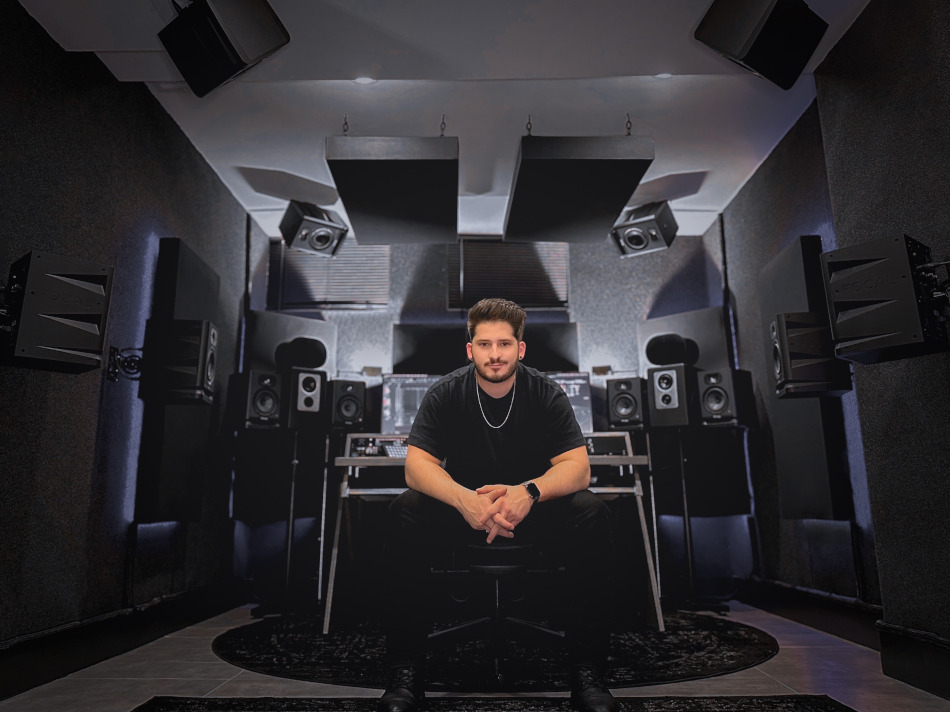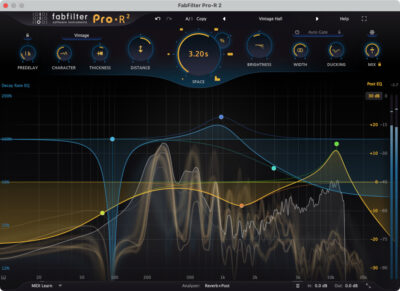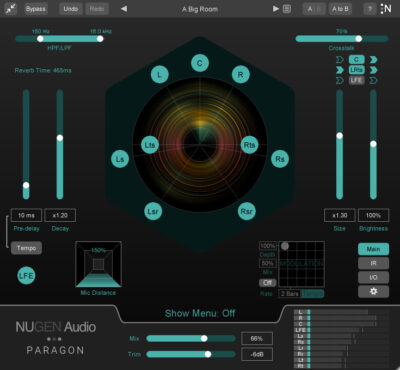My Go-To Dolby Atmos Reverbs: A Hit Mixer’s Top Spatial Plugins
What are the best Dolby Atmos reverb plugins? This prolific mixer reveals two spatial audio reverb plugins that he frequently turns to.
Inspired…and inspirational.
Both adjectives apply to the busy mixer and mastering engineer Nick “Squids” Squillante. He’s quickly emerging as an immersive mix hit man, with chart-toppers that include “Rescue Me” by Dirty Heads (#1 on the Billboard Alternative chart), “Psycho” by Asking Alexandria (#1 on the Billboard Mainstream Rock chart), plus new work for Mötley Crüe, Tommy Lee, Papa Roach, Bad Wolves and more.
Working out of his Brooklyn, NY studio, Squillante is psyched about spatial. He’s fully equipped for Dolby Atmos 9.1.4 immersive mixes, outfitting his room with Focal Alpha 50 Evo monitors for LCR, surround, and height speakers, along with dual Focal Sub One subwoofers. He also relies on some beloved plugins, as you’ll soon see.
“Squids” first inspired SonicScoop readers with an excellent editorial he penned (OK, he typed it) for SonicScoop in 2019, “Six Ways Michael Brauer Made Me Smarter in the Studio”. You’ll see how good luck one evening in Electric Lady Studios – combined with determined drive and a positive attitude – set him up for a long assisting run with one of the planet’s most revered mixers.
Fast forward five years, and its obvious why Squillante is succeeding in his own right. Sensing a Wild West phase of Dolby Atmos, he saw an opportunity to “leave a lasting footprint” in the format. Stating that spatial is as much about feel as it is sound, Squillante pays special attention to how he deploys his reverbs – and which ones he chooses to use in the first place.
This is first in a two-part series of Dolby Atmos mixing insights from Nick Squillante. Watch out for Part II, coming soon!
The Mixer: Nick “Squids” Squillante
My Mix Room: Mixed By Squids | Brooklyn, NY
Select Credits ): Dirty Heads, Asking Alexandria, Aloe Blacc, Akon, Fletcher, Hozier
Currently Working on: Mötley Crüe, Dylan Dunlap, David Archuletta, Movie Night
For Example:
Dirty Heads “Rescue Me” (Dolby Atmos Mixing & Mastering Engineer)

Asking Alexandria Where Do We Go From Here? LP (Dolby Atmos Mixing & Mastering Engineer)
Mötley Crüe “Dogs of War“ (Stereo & Dolby Atmos Mixing & Mastering Engineer)
Movie Night “Something” (Stereo & Dolby Atmos Mixing & Mastering Engineer)
Dylan Dunlap “Tell Me” (Stereo & Dolby Atmos Mixing & Mastering Engine)
Sam DeRosa “Just Get By” (Stereo & Dolby Atmos Mixing & Mastering Engineer)
Why Dolby Atmos Works for Me: Dolby Atmos, at its core, makes it possible to place a listener inside a song… that’s simply not doable with just a left and right channel in a stereo mix.
Now, I’m not saying stereo mixes are obsolete at all – I still mix records in stereo all the time – but Atmos is here, and in my book, it’s here to stay.
To me we’re in the “Wild West” phase of Dolby Atmos for music. What I mean by that is there are seemingly endless new techniques being talked about among engineers behind the scenes, and the cool part is that everyone is learning again. Learning is essential, I always say the second you think you know it all…you’ve probably fallen behind.
That said, the immersive mixing space has (no pun intended) equalized the playing field and for now, names don’t matter as much, the sound of the mixes do. That’s why I think it’s more possible to leave a lasting footprint in Dolby Atmos.
Reverb is Different in Dolby Because…: OK, this one is fun because I think that while reverbs in stereo and Dolby Atmos can be used similarly, I tend to think differently about the “why” when reaching for a reverb.
To start, a lot of Dolby Atmos mixes are made from mixed stereo stems. Stems tend to have reverb printed on them from either the production or the stereo mix, so when using reverb in an immersive mix I tend to think of it as a spatial expander rather than a typical tailed reverb.
I’ll explain: Let’s say you have some backing vocals with reverb baked in and you want to place them behind you. All of a sudden, the baked-in reverb just traveled with them behind you, but hmm…Wouldn’t it be great to get a tiny bit of that entire signal in all of the speakers while leaving the majority of it behind you?
Short answer, yes, and that’s possible by using very short multi-channel reverbs for added space while allowing the localization of the pan to remain wherever you want (in this case behind the listener).
So to circle back to my point, yes reverbs can do the same thing, but WHY I reach for reverbs is entirely different when thinking immersive.
In No Particular Order…My favorite Dolby Atmos reverbs are:
FabFilter Pro-R 2
My favorite reverb at the moment is the new FabFilter Pro-R 2.
I came across the Pro-R 2 while upgrading plugins one day. I had an upgrade deal, saw it was multi-channel up to 9.1.6 and I grabbed it. I was blown away and it found a permanent space on my template.
I use the Pro-R 2 primarily as a spatial expander but sometimes have setup sends for fun throws or long tails to amplify moments.
Nugen Audio Paragon
Paragon is on par with some of my favorite 3D space reverbs. There’s a really great depth to this plugin, but for now it only supports up to 7.1.4.
This I always use for enhancing dimension or pushing a sound farther away. I’d recommend experimenting with this to make your own version of the “far” binaural setting on elements that call for it.
Final Word: Atmos mixing revolutionizes the way we experience music. It allows for the creation of immersive soundscapes that envelop listeners, transcending traditional stereo boundaries.
Atmos mixing allows me to put the listener right into the heart of the music, enhancing engagement and connection with songs. It’s not just about hearing the music; it’s about feeling it in every dimension, amplifying the emotional impact and depth of the listening experience. That alone is why I’m all in on Dolby Atmos.
Please note: When you buy products through links on this page, we may earn an affiliate commission.









